It was only a few years ago that National Geographic photographer Catherine Karnow proclaimed, “Myanmar is the most photogenic place that I have ever photographed.” That’s saying quite a lot from such an accomplished photographer who has worked all over the world.
Nothing has changed in that regard, but due to the conflict in remote Rakhine State, photography enthusiasts in the West have jumped to the conclusion that Myanmar is a dangerous place to visit, which could not be further from the truth.
The following article explains why Myanmar is still one of the safest places to travel anywhere in the world, plus points out reasons why Magnum photographer Steve McCurry still loves it and continues to visit. McCurry has taken his own photo tour groups to The Golden Land every year for well over a decade, including early in 2018.
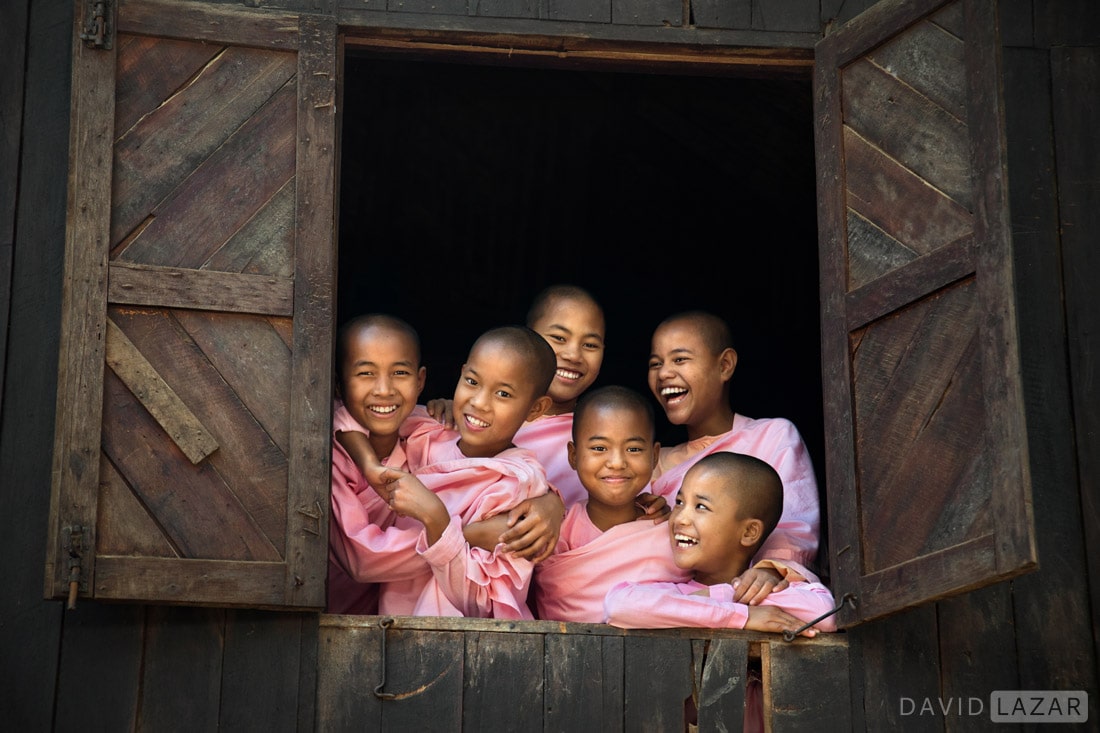
IT’S SAFE!
While news reports over the forced expulsion of Rohingya people in a far off corner of a vast country are quite disturbing, they are NOT a reflection of the much larger reality – the fact that Myanmar remains one of the friendliest, most welcoming, and safest travel destinations anywhere in the world. Safer than Thailand, safer than Cambodia, safer than Vietnam, safer than India, even safer than England, France, Italy or the United States.
Violence against a traveler in Myanmar is extremely rare. Even theft is quite rare. Soe Soe Lwin of Luminous Journeys Travel & Tours has spent nearly two decades as a travel agent in Burma, and during that time has had only one case theft reported by a client, and zero violence. There have no cases of camera gear theft, which cannot be said for many other popular photography destinations.
Except for a decline in visitor numbers since the conflict, tourism in the Golden Land continues 100% as normal. Fewer tourists should be seen as extra incentive for the travel photographer, not less.
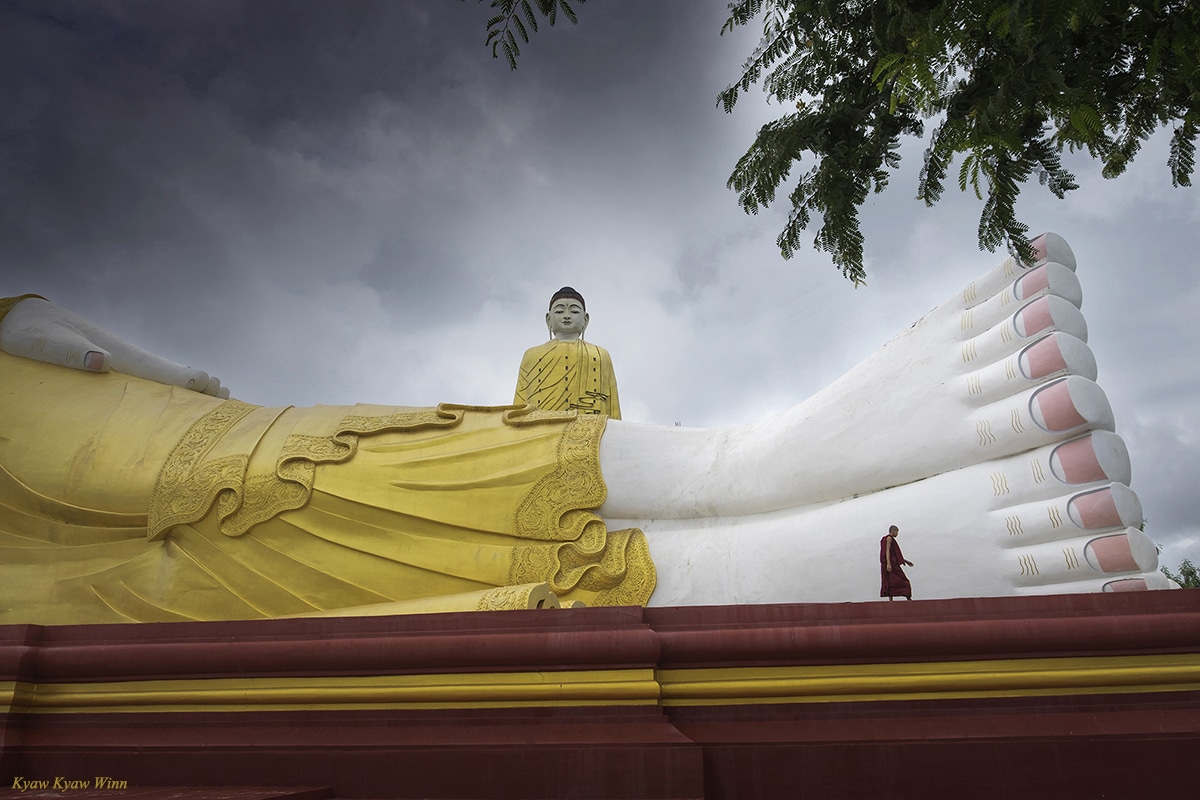
A Question of Ethics?
Safety issues out of the way, what about the ethical question? Of course no one wants to support an immoral military, but truth be told, the generals in charge are not the ones who suffer if you decide to stay away. Their personal financial interests in tourism are a drop in the bucket compared to their vast holdings. Those who will actually suffer are the everyday people who – now more than ever – earn their livelihood and support their families through tourism. The most ethical way to stand in solidarity with the hardworking people of Myanmar is to visit them, not to avoid them.
Edwin Briels, managing director of Khiri Travel Myanmar, has been working in the country for over twenty years. Recently he told TTG Asia:
“The ‘ethical thing’ for tourists to do now is not to give up on Myanmar….
The government has always been very concerned about the safety of foreigners visiting the country and it is impossible to accidentally travel to a restricted area. I do think that Myanmar continues to be one of the safest places on earth to travel. Continue to visit the country in a sustainable way to support all people from all races and religions.”
And lest the reader think it’s only travel professionals with a vested interest who are encouraging travelers to keep coming, please consider the case of Mark Farmaner. Mark is the director of Burma Campaign UK, and a long time, very vocal critic of the military:
“Anyone choosing to avoid holidaying in Myanmar is making a personal moral choice, which they are free to do, but it won’t do anything to help the Rohingya.”
In fact, it won’t do anything to help anyone. Including the visiting travel photographer, who would unnecessarily be missing out on one of the great photographic and cultural experiences on the planet. And that’s no hype. Just ask Steve McCurry.
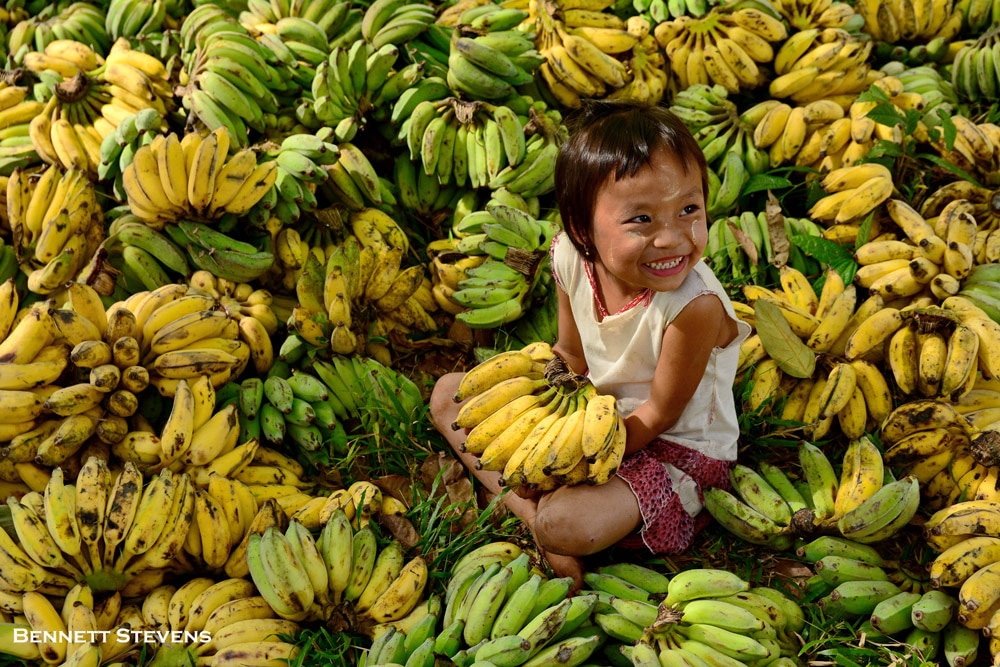
SURREAL LANDSCAPES AND HISTORICAL GRANDEUR
Shwedagon Pagoda in Yangon stands some 325 feet tall and is covered in over 50 tons of gold. It has been the spiritual center of Myanmar for over 2,500 years, and every Buddhist in the country strives to make pilgrimage at least once during their lifetime.
Photographically speaking it’s perhaps best as a backdrop from outside the temple grounds, as it can be seen from all over the city. Getting perspective when close is difficult, but many early evenings monks can be seen climbing and cleaning it, which adds a sense of scale. But there is a lot to see and shoot around the great pagoda.
There are numerous temples and Buddha pavilions where locals worship with candles and incense, as well as monks and nuns. A good photographer can spend many hours here, and visit multiple times without ever getting bored. I have yet to see the consummate photo essay on Shwedagon & environs, so you could be the first!
The 2,220 temples of Bagan make up one of the great archaeological sites of the world. The once Royal City of Bagan was the capital of a vast Southeast Asian kingdom that flourished as the world center of Theravadan Buddhism for nearly a thousand years. When the light is right and the mist or dust is rising, it borders on the surreal.
While it’s true that climbing the temples was banned in 2017, there are viewing mounds in four locations. In addition, you are free to roam the vast temple area on your own, either on foot, e-bike, horse carriage or car. The place is dotted with little monasteries as well, and there are working villages within the Bagan zone growing crops and herding goats and cattle.
Other places of note that fall under this heading, are the many thousands of golden pagodas all over the country; the Golden Rock of Kyaiktiyo; the U Bein Bridge at Amarapura, the rarely visited but fascinating eastern Himalaya; karst limestone formations, rice fields and Buddha caves of Hpa An; the massive, earthquake split temple of Mingun on the Irrawaddy River near Mandalay; the multi-colored checkerboard flower and vegetable fields of Aung Ban; the rice terraces of Kyaing Tong; the virtually virgin 808 tropical islands of the Myeik Archipelago; and very much more…
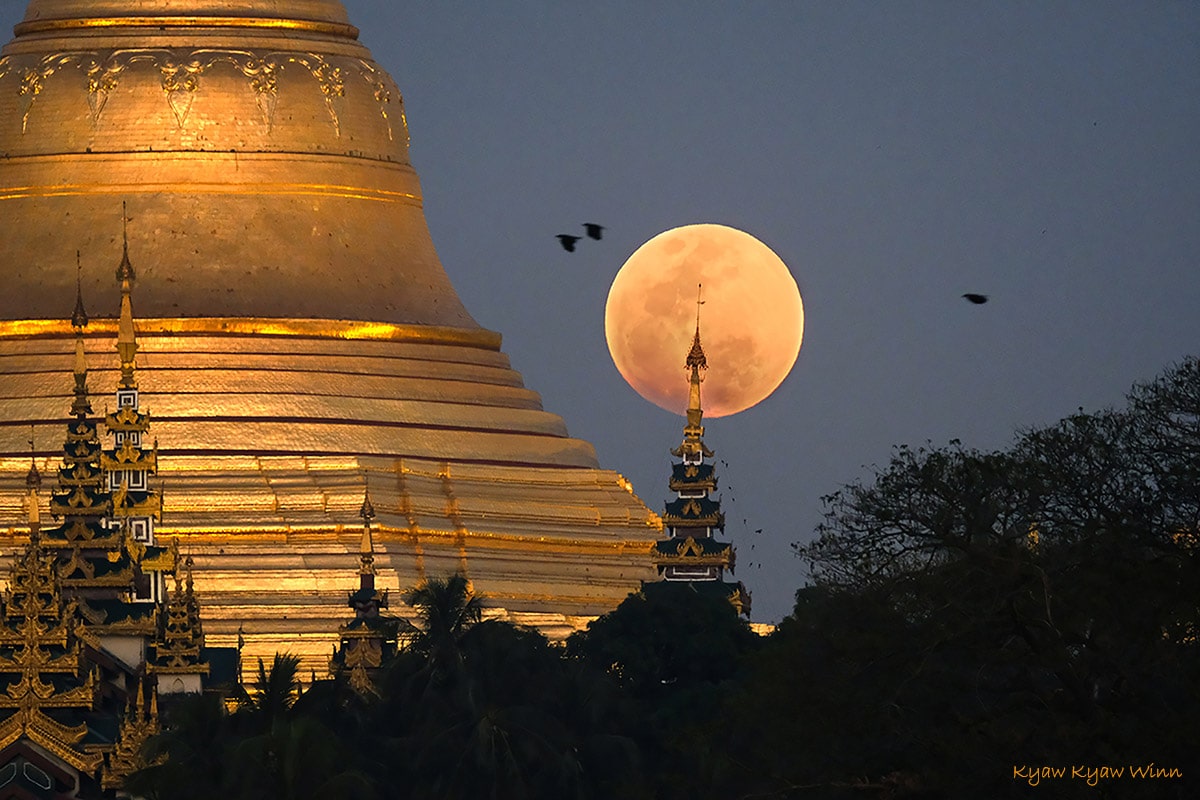
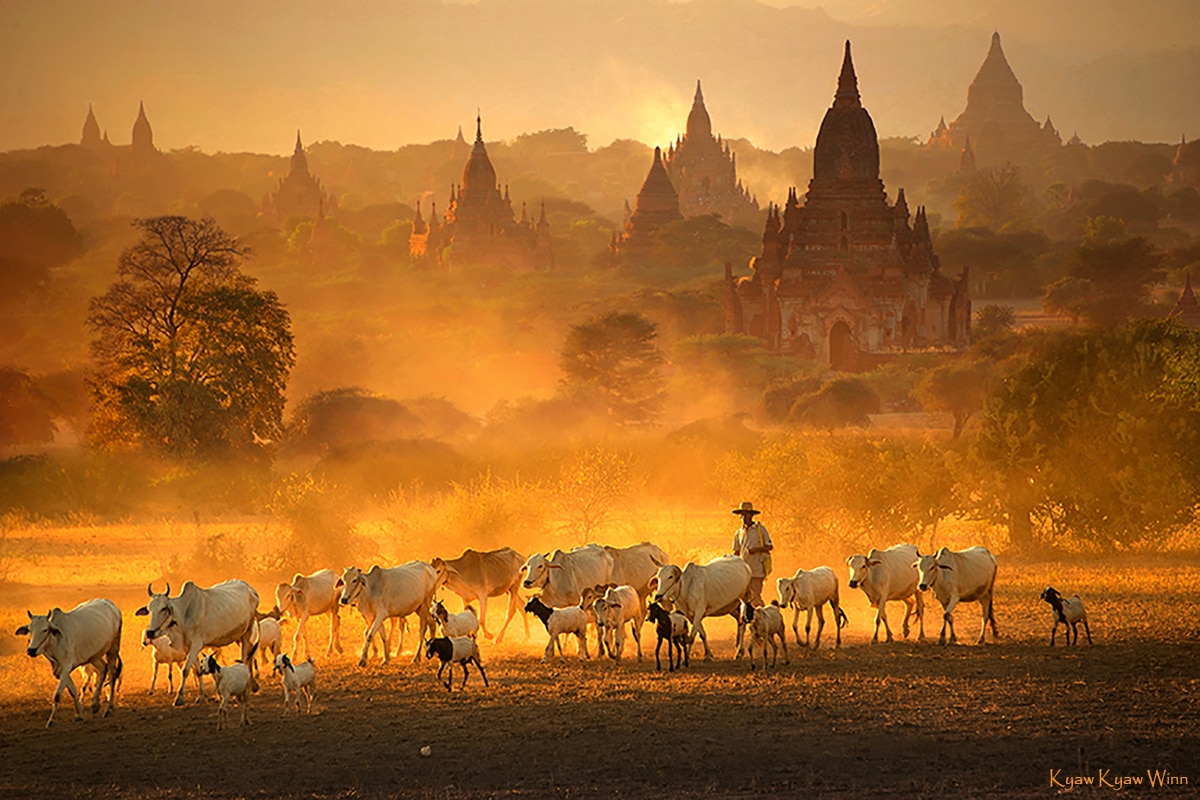
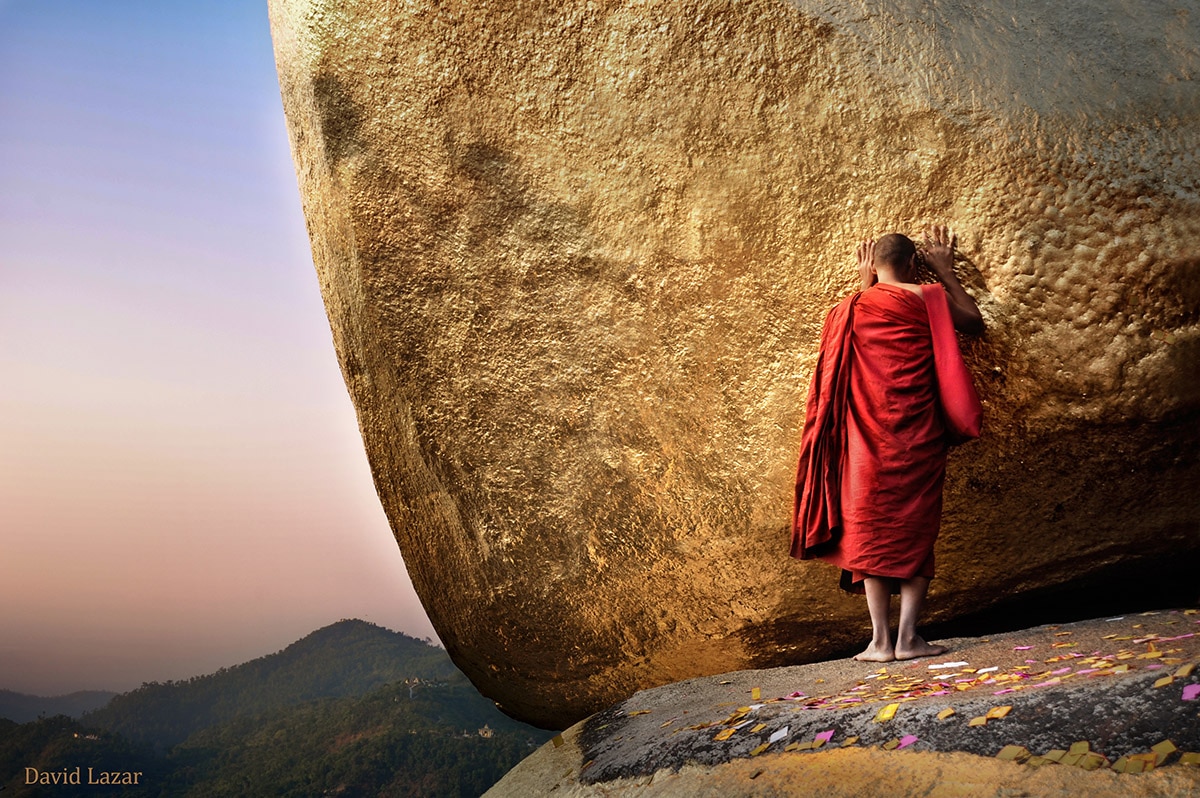
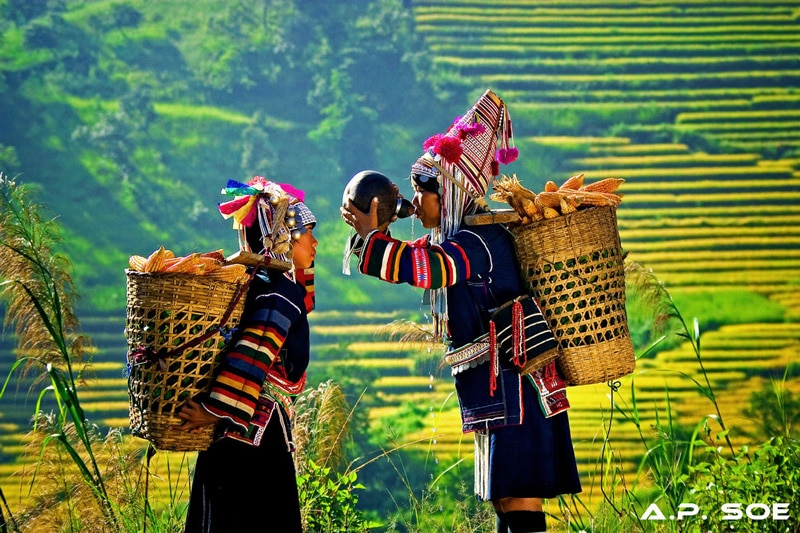
MONKS AND NUNS AND MONASTERIES
There is no other country where Buddhist monks in maroon or orange robes or nuns in pink are so much a visual part of daily life. Every morning in cities, towns and villages around the country monks make their alms rounds, collecting food and small amounts of money as they walk single file along streets, paths and rice paddy berms. These lines can range in length from just a few to several hundred monks during a special event, such as the Ananda Pagoda festival in Bagan.
Mandalay has the largest number of monasteries and monks, and you see them not only on alms rounds, but throughout the day performing more mundane duties like shopping in a vegetable market or mobile phone shop, or even playing football.
Nuns in pink robes, which are unique to Myanmar, are not as numerous or visible as their male counterparts, and only go on alms rounds once a week or so. However, it is possible to arrange photographic visits to many nunneries.
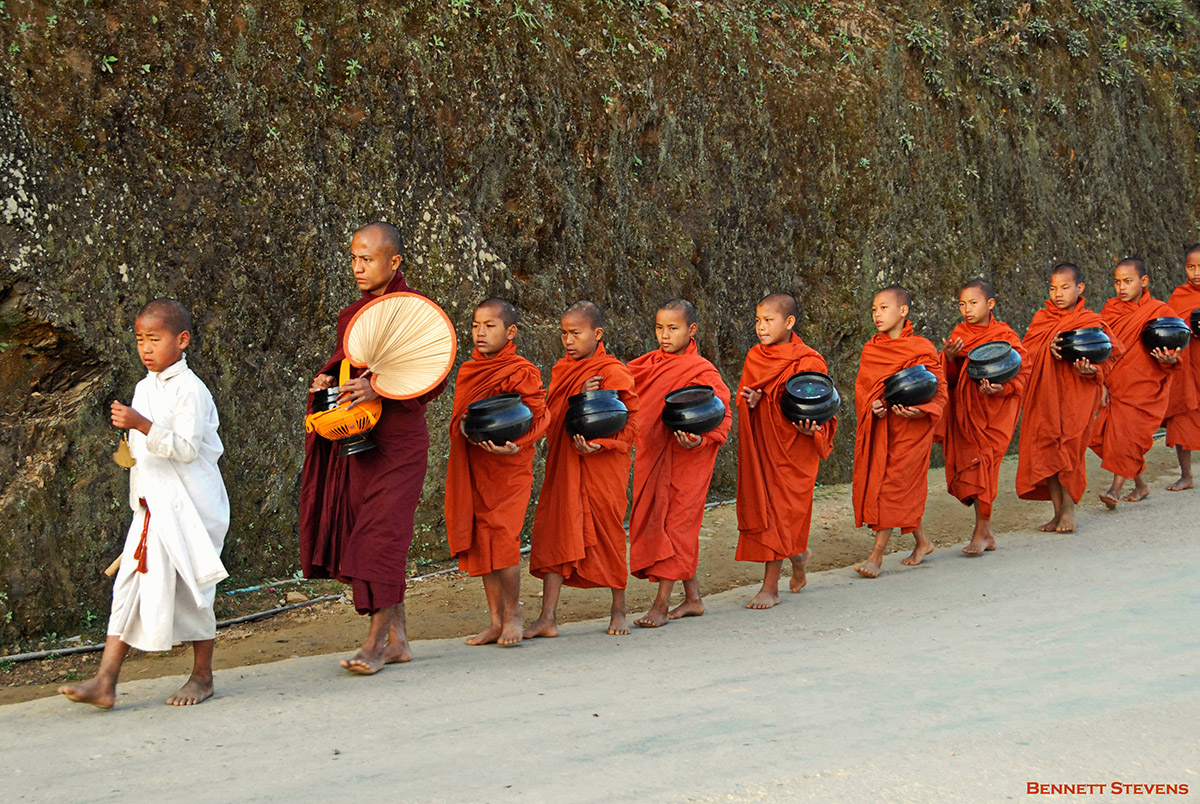
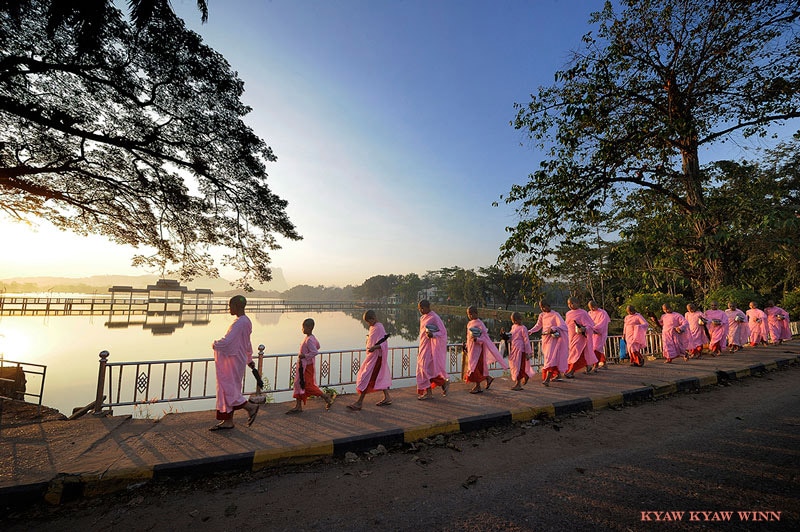
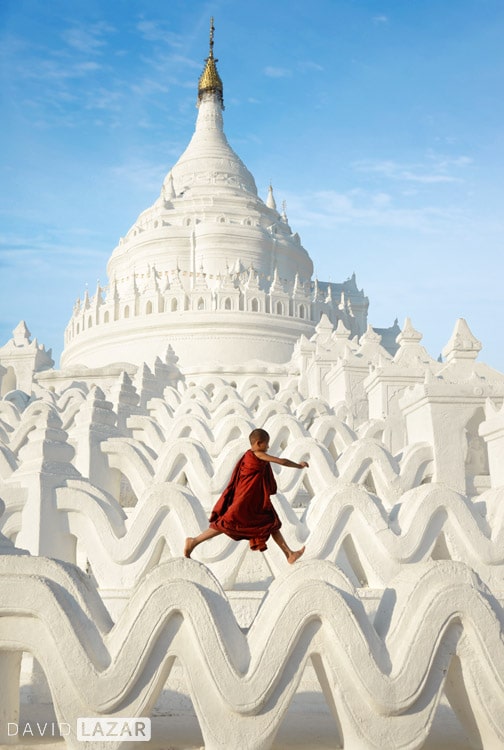
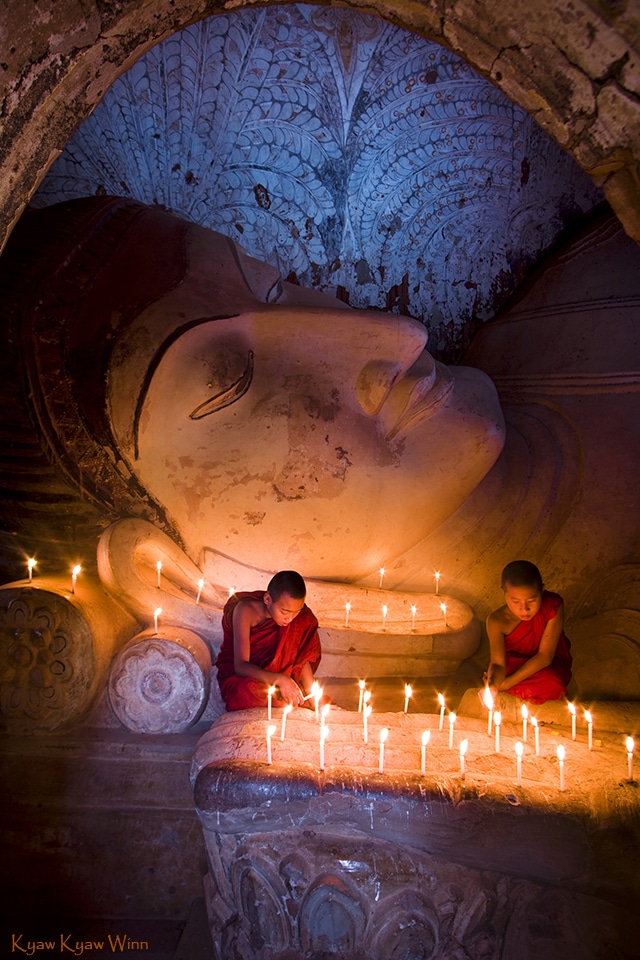
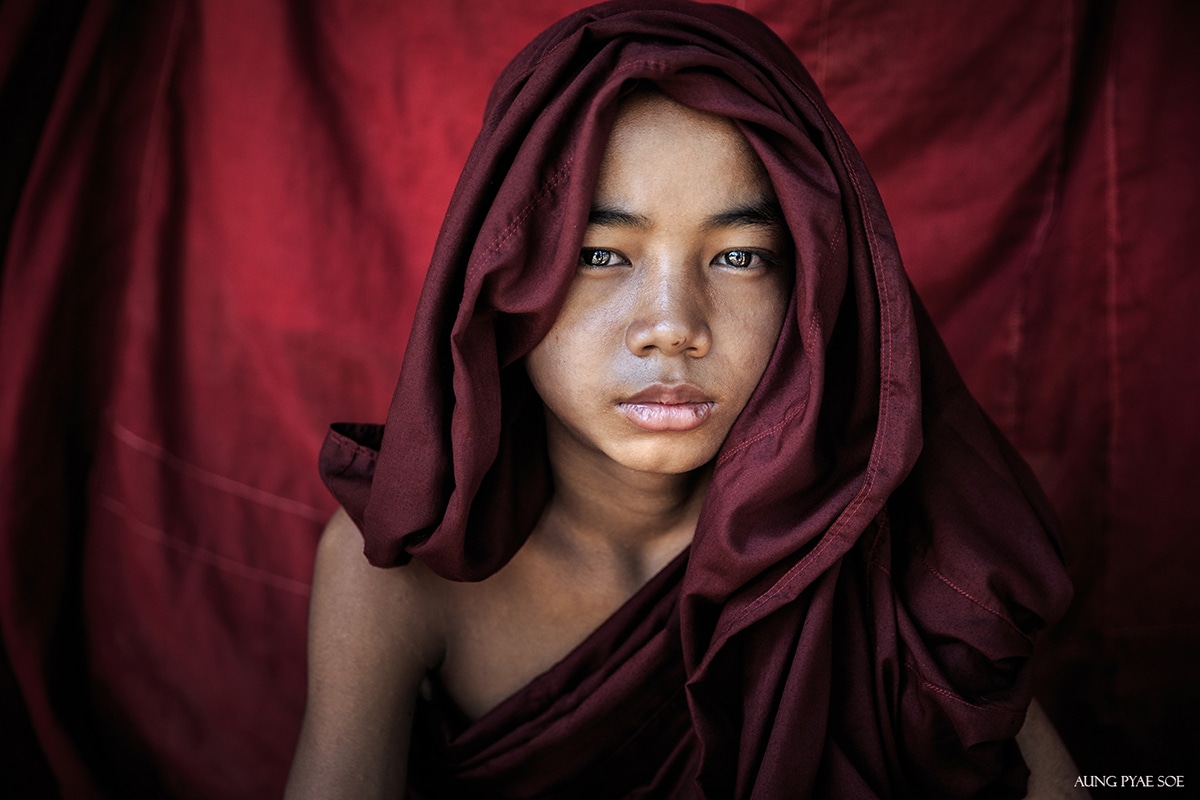
THE MAGIC OF LAKE INLE
Photographically speaking, Inle is most noted for its unique Intha fisherman but is also inhabited by several other tribal groups, including the Pa O. The Intha get around the shallow lake by rowing their skiffs with one leg wrapped around an oar, and fish by dropping conical baskets to the lake bed. Both the baskets and the rowing style, along with reflections from the water and a mountain backdrop make for some striking image making.
The very early morning is the best time to catch the fishermen, especially during December and January when mist rising from the water can create ethereal sunrise light and a feeling of mystery. Afternoon can be excellent as well, as the photograph below attests to. This was shot blind from on board the boat by sticking the camera through the net and getting lucky.
Hundreds of temple ruins near the market village of Indein, whose origins are still a mystery, are always worth a visit. There are also Buddhist temples and monasteries on the lake itself, villages built on stilts, and floating gardens of assorted fruits and vegetables, including 70% of Myanmar’s tomatoes. Other photo ops include cottage industries like umbrella making, cheroot rolling, lotus silk weaving, and rice pasta making.
While some complain that the lake is becoming over-touristed, this is far from the case. It’s a big lake. On the whole, Myanmar is vastly under-touristed, and Inle is no exception. At least so far! While the engines of local longtail boats can seemingly wreck the peace at times, all you have to do is get off the beaten waterways by canoe and vanish into the smaller garden sloughs. It’s there that you find remarkable tranquility as you paddle through hidden villages and meet and photograph the friendly locals.
Although the word “magic” is overused in the descriptions of the lake, there truly is something about the place that is profoundly affecting and never quite leaves you.
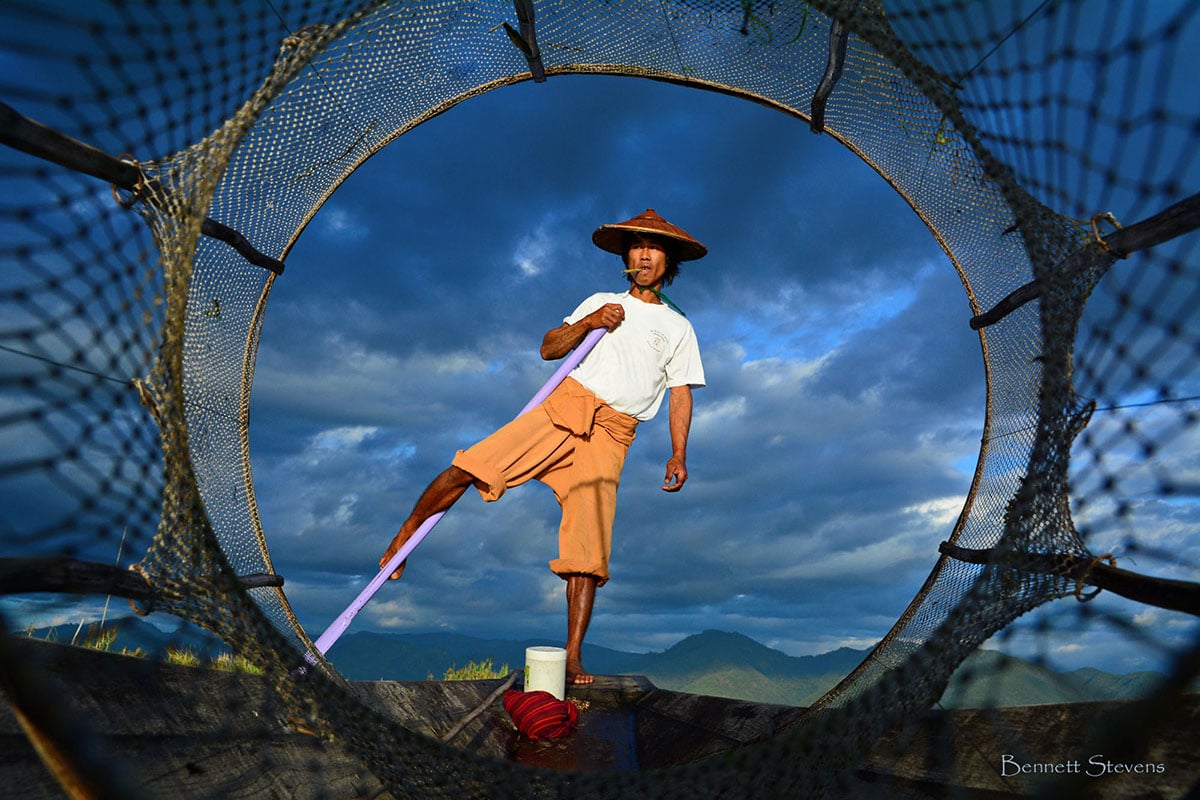
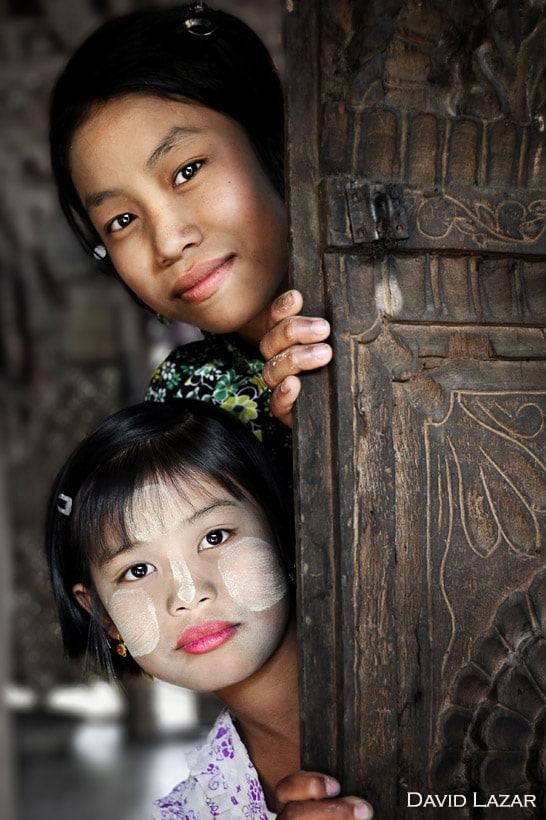
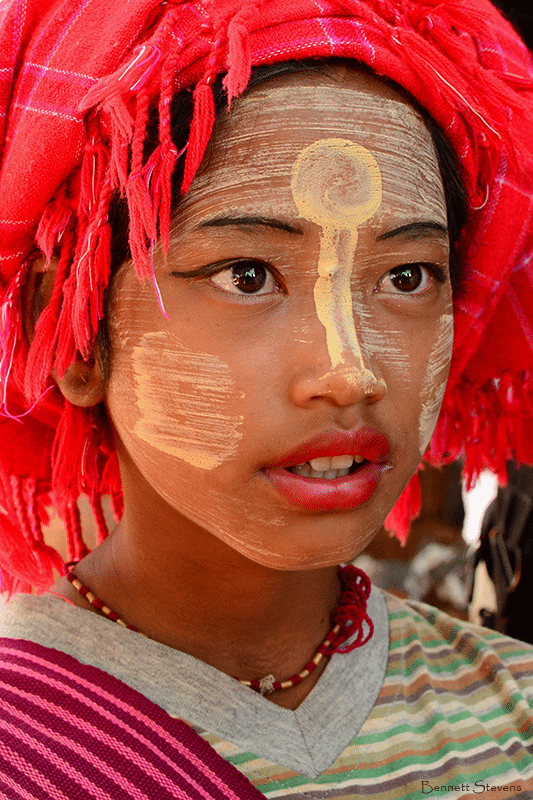
VANISHING TRIBES – ONE ON THE LAST BEST OPPORTUNITIES
There are in excess of 100 different ethnic groups in Myanmar, many of whom still wear traditional clothing and live much as they have for centuries. This presents an extraordinary opportunity for documentary and travel photographers.
As we have seen in neighboring Thailand and many places around the world, traditional ways of life are vanishing quickly. Myanmar represents one on the last best chances to visit and photograph rare tribal peoples.
The various tribes are generally very welcoming, but it’s important to have a good local guide or fixer assist you in making contact. They speak their own dialects, and many do not speak much if any Burmese.
Timing is also critical, or you may find only a few old people and young children about. Please practice good social manners with kindness, and never force a situation. Certain much-needed supplies are welcome, but consult with your guide or fixer as to what’s best and most needed at the time.
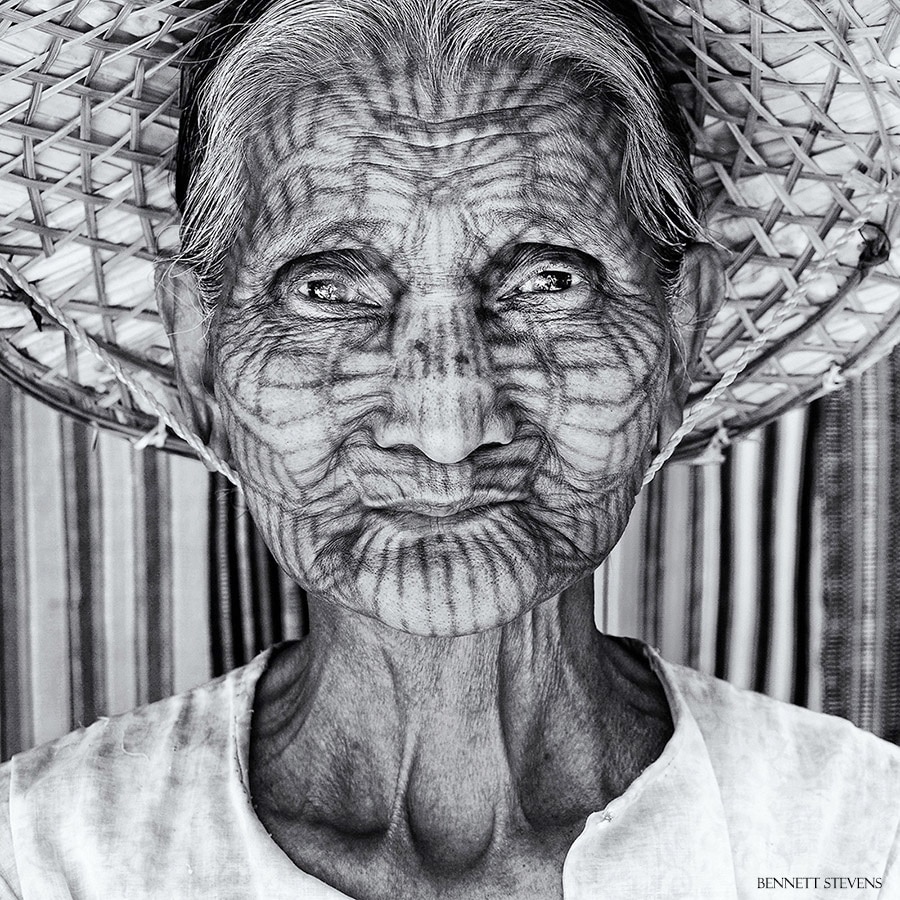
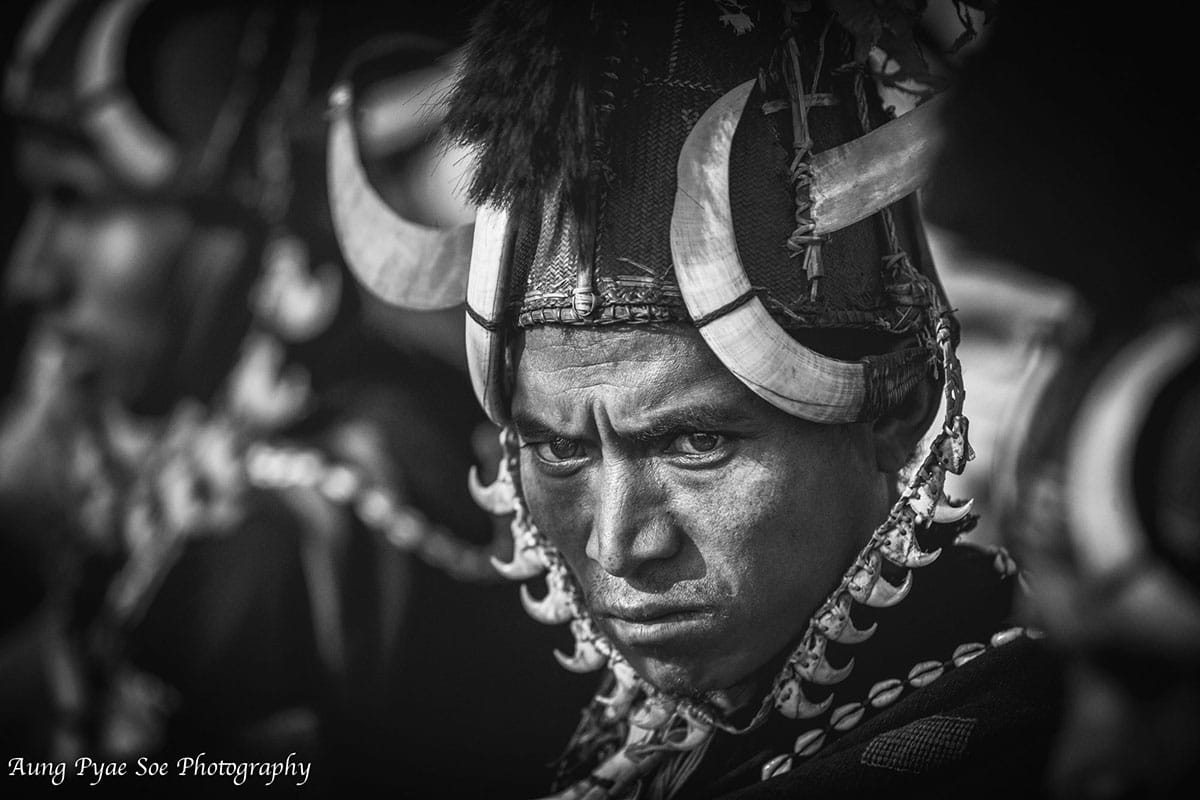 Naga warrior, northwest Sagaing Division. Photo: A.P. Soe
Naga warrior, northwest Sagaing Division. Photo: A.P. Soe
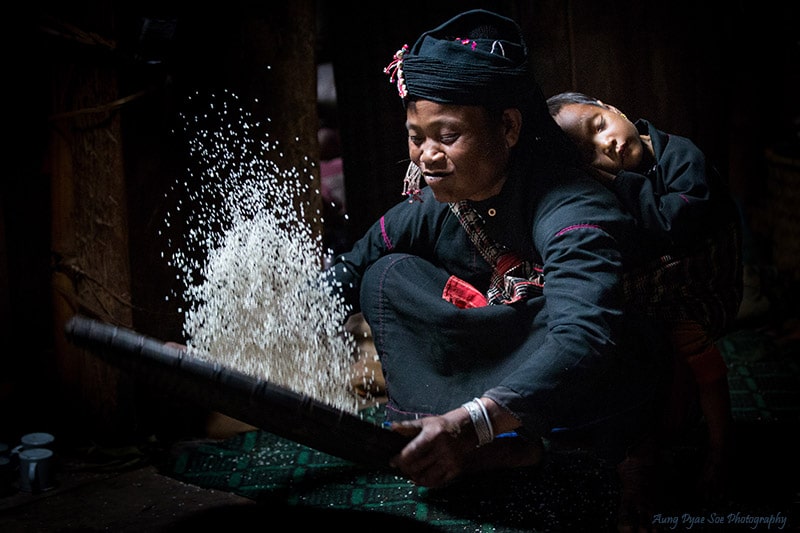
UNIQUE STREET PHOTOGRAPHY
Not only is Yangon probably the friendliest major city in the world, but it’s also one of the great unsung locations for unique and striking street photography. While the city is undergoing a building transformation with new hotels and shopping centers going up, (along with numerous British colonial buildings being restored to their former glory), Yangon is still largely a decaying masterpiece for the street photographer, providing a rich tapestry of backgrounds and anachronistic settings. Within the settings are of course the diverse and welcoming people going about their daily lives.
Burma is reminiscent of India for street photography, (especially in India town!), but without the level of pollution and intensity and the difficulties that come with it. Call it, India light. Mandalay is also excellent for street photography, and is the unofficial monastery capital of Myanmar.
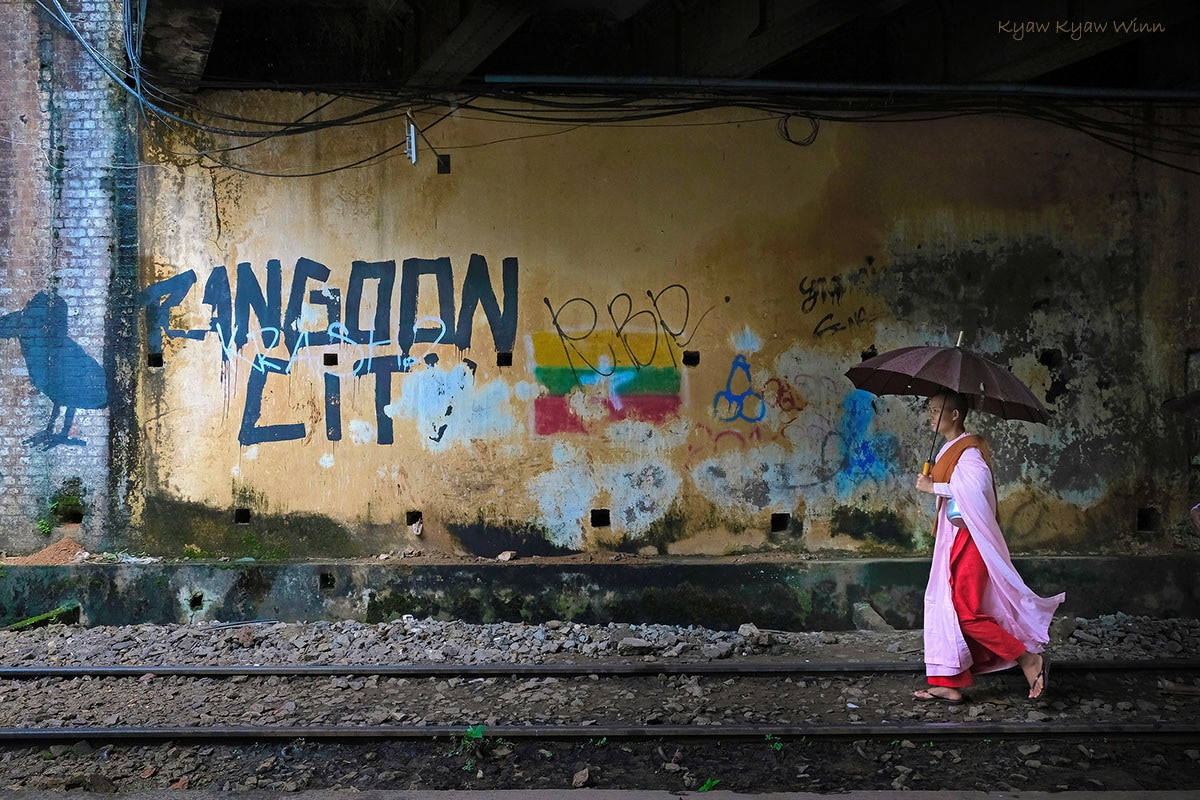
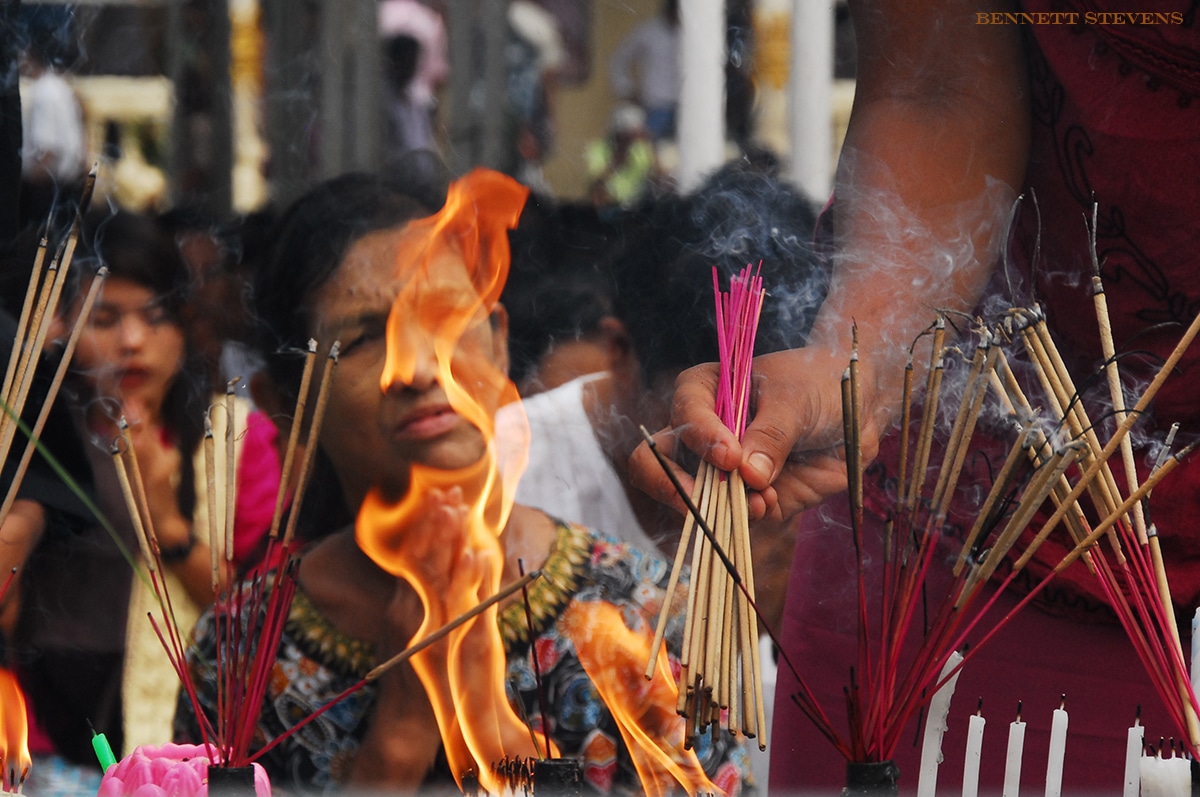
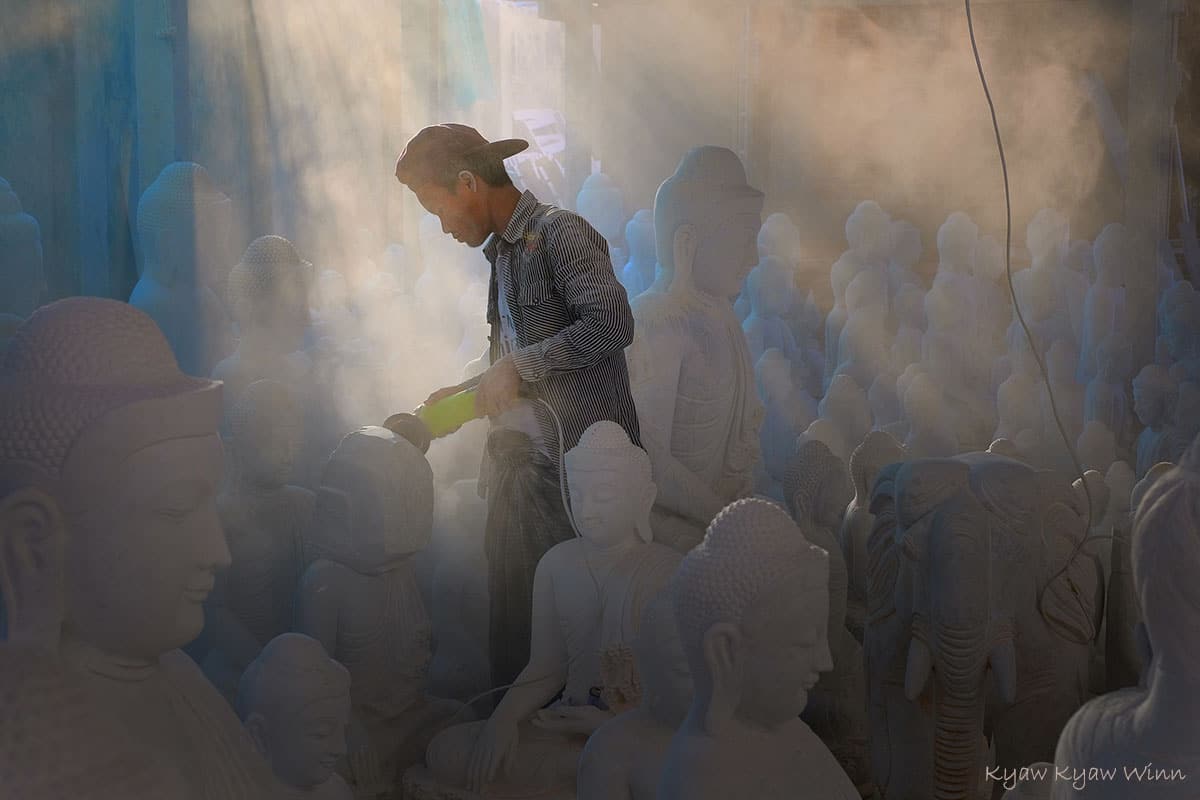
It’s clear the largest (and poorest) country in Southeast Asia still has an inimitable abundance of impact image making possibilities for the travel photographer. It’s also clear that Myanmar is still a very safe place to travel, and its people are still among the friendliest and most welcoming anywhere in the travel universe. If ethical qualms remain, please consider the actual effect of staying away, as opposed to the merely symbolic.
No doubt Myanmar belongs on every travel photographer’s Bucket List, on or near the top!
Bennett Stevens is an award winning travel and documentary photographer who’s been visiting Burma for more than a dozen years. He’s also the photo tour workshop director at Luminous Journeys, specializing in Southeast Asia, India and Bhutan.
All photographs by Luminous Journeys photographers David Lazar, Kyaw Kyaw Winn, Aung Pyae Soe and Bennett Stevens.

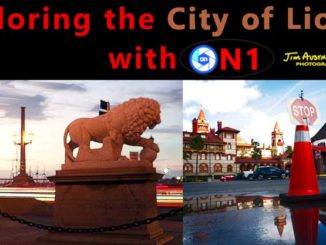
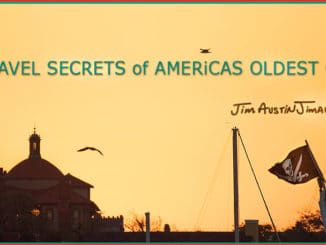

Leave a Reply